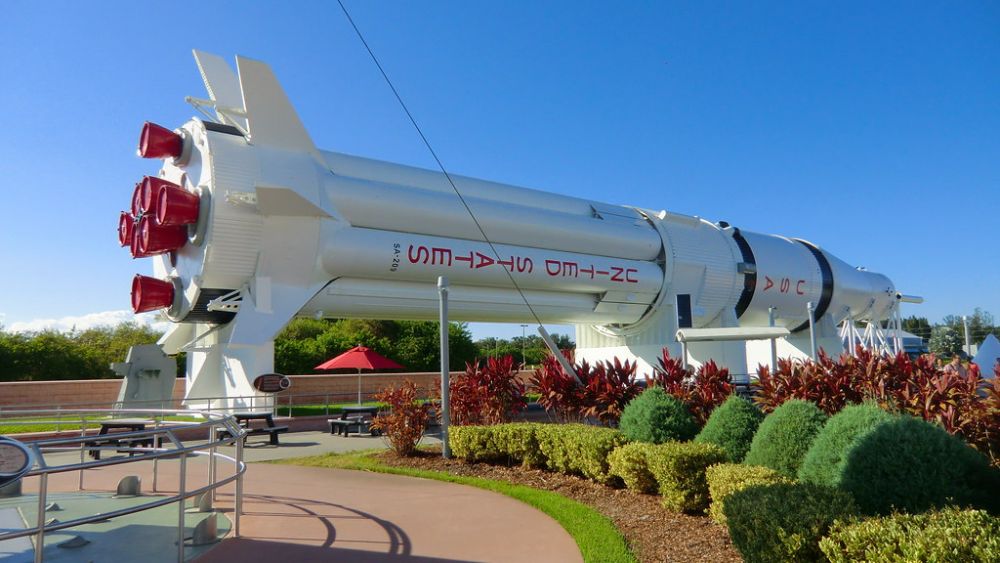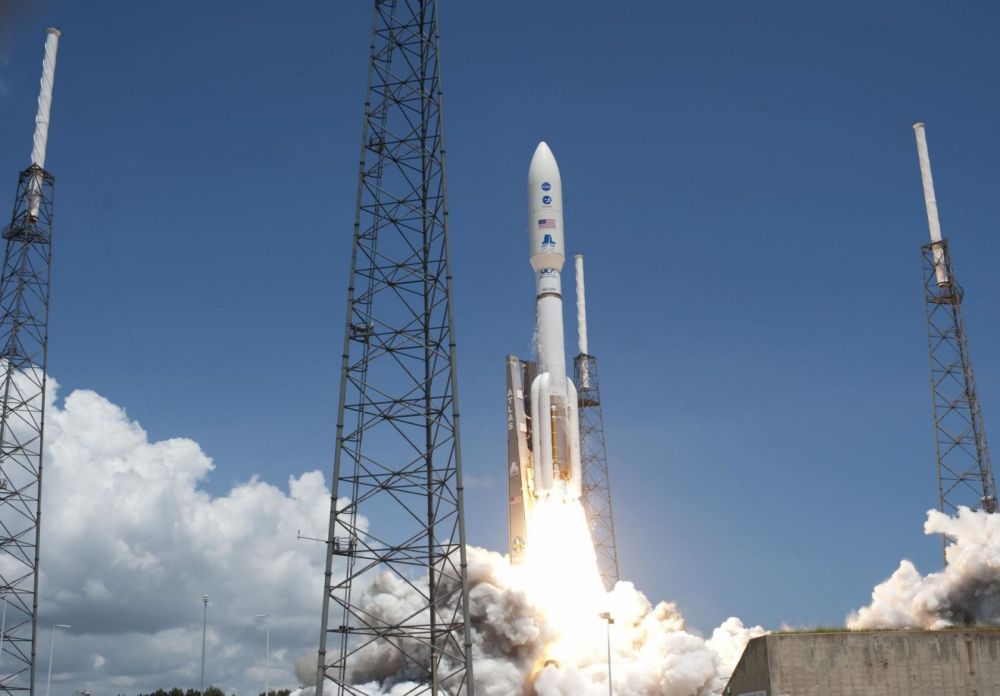History and Highlights of Cape Canaveral
By the late 1950's Cape Canaveral was, geographically, running out of room. Its launch sites lined the coastline from tip to tail and left little space for much else. In April of 1960, the Department of Defense reported, "[Cape Canaveral is] substantially saturated with missile launching facilities and test instrumentation." This proved problematic for the space program since an ambitious goal of NASA was to build a vigorous manned spaceflight program. It became known that NASA needed more land for launch areas and soon effort was put in to solve the problem.
Prior to NASA’s first manned lunar landing program, Launch Complex 39’s design was to be decided on no later than January 1964. The launch complex had to be technically compatible with any programs NASA would be supporting, despite the costs. At the time, NASA hadn’t figured out how to send men to the Moon and safely return them to Earth. Because of this, the new launch complex’s design had to wait until a specific program was selected. Three basic methods of transportation were proposed, but each of them would require different launching concepts. The first method consisted of deploying one large rocket, named Nova, that would send the astronauts on a direct ascent to the Moon. The second method needed the launch of multiple Saturn-type rockets, followed by an Earth-orbit rendezvous, then a trip to the Moon. The third method required the launch of multiple Saturn-type rockets with a lunar-orbit rendezvous later on. Design of Launch Complex 39 took form quickly. The main problem was transporting Saturn V from assembly to the launch pad. Transport by barge would have been unsafe due to wind resistance and a railway was too expensive.
However, in 1961, President John F. Kennedy declared that the U.S. would send men to the Moon and safely return them to Earth by the end of the 1960s. This forced NASA to quickly choose a single launch method and construction design for its new launch facilities. The Nova plan, which was the first method, was rejected early because it only would have technologically succeeded until after 1970. Either of the Saturn-type launching methods would have sufficed, but both would still require the construction of a particular launch site depending on which one was chosen. On June 16, 1961, it was insisted that the development of a new NASA launch site become an actual national priority. After that, the NASA Launch Operations Directorate (LOD) and the Air Force Missile Test Center (AFMTC) were in charge of picking a launch site.
NASA wanted the land purchases for Merritt Island in 1961 and twenty days later the Army Corps of Engineers (ACE) began getting the land. While most of it was bought with the landowner’s approval and cooperation, some of the owners called upon legal support before leaving or selling - they didn’t want to give up their land. This eventually gave NASA access to land, but no solid plans for an actual site. During November of 1961, two months after the start of land acquisition, the Saturn C-5 - which was later renamed Saturn V - was introduced as a new launch vehicle. This was considered to be a more efficient approach in supporting the lunar landing missions.
Saturn V was given full approval to be made on December 4, 1961, and in January of the following year, Saturn V was officially known as the rocket for manned flights to the Moon. At that point, NASA started to perfect Launch Complex 39 on Merritt Island. Layouts for the assembly area, launch pads, launch control center, and industrial support area were created in 1962. The total cost of Launch Complex 39’s development estimated itself at about $500 million, and it would take three years to be fully constructed. Nasa announced the establishment of the independent NASA installation, Launch Complex 39, on March 7, 1962. This resulted in the Launch Operations Directorate (LOD) being redesignated as the Launch Operations Center (LOC).
It’s not known exactly when Launch Complex 39 was actually activated, for there is no definitive date, but there are three important dates aside from that to take into consideration - one for each main area of the launch site. A topping-out ceremony was held on top of the Vehicle Assembly Building on April 14, 1965, and this marked a huge milestone within the assembly area itself. On May 26, 1965, Kennedy Space Center Headquarters was officially opened and on May 25, 1966 - which was only five years after the famous announcement from President Kennedy - a practice dummy of Saturn V, titled Saturn V 500-F, was transferred to Launch Pad 39A.
After that, activity followed Launch Pad 39A (South) and LaunchPad 39B (North) so much so that it culminated into the launch of Apollo 11 when it launched from Launch Pad 39A on July 16, 1969. Amazingly, the new spaceport had sent the first men to the Moon and back safely. Today, Launch Complex 39 is still largely intact and is now in support of the NASA Space Shuttle program.
Attractions
Manatee Sanctuary Park
Cape Canaveral's Manatee Sanctuary Park boasts over 10 acres of riverfront beauty. Situated on the Banana River, this park has a little something for everyone! Come to exercise, host an event, or just relax and enjoy the scenery!
Cape Canaveral Lighthouse
The Cape Canaveral Lighthouse has stood on the cape for over 150 years. Beginning Jan. 8, 2016, tours of the Cape Canaveral Lighthouse and other sites at Cape Canaveral Air Force Station will be conducted on Fridays and Saturdays, departing at 8:30 a.m. from Exploration Tower at Port Canaveral in air-conditioned buses. Tickets are $27 per person.
 Kennedy Space Center Visitor Complex
Kennedy Space Center Visitor Complex
Kennedy Space Center offers a fun experience for all ages. Learn about all things space as well as the history of Florida's space exploration. While there you can take a bus tour and even experience a shuttle launch simulation! Tickets for Kennedy Space Center Visitor Complex start around $43 per person.
Cape Canaveral National Seashore - Playalinda Beach
One of the cleanest beaches in Florida, the Cape Canaveral National Seashore is a must-stop! With over 20 miles of pure beach (Playalinda Beach is popular among the many sections), there is plenty of space to kick-back, relax, and enjoy the natural beauty of this untouched beach.
Deep-Sea Fishing
If you're a fan of fishing, there are multiple services that offer charter boat rentals to those who wish to try their hand at deep-sea fishing.
Click the photo to search all Florida Space Coast Properties / The Real Estate Firm of Florida, Inc.
Reach out to us anytime to learn more about the Space Coast. We look forward to meeting you!
The Real Estate Firm of Florida, Inc.
321-591-7777 / movebrevard@gmail.com / movebrevard.com








